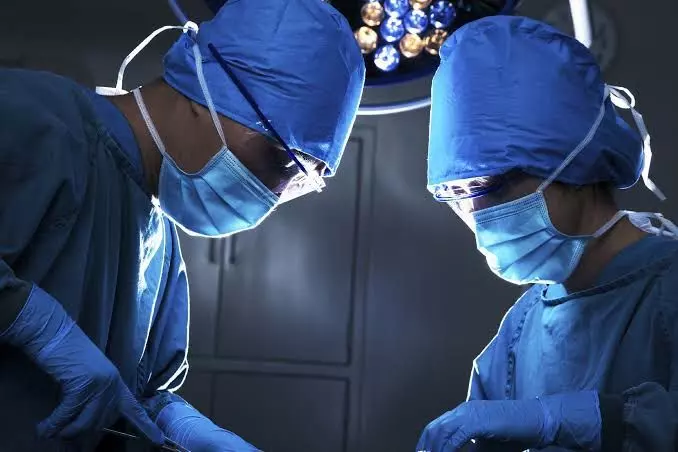AIG hospital removes kidney tumor of a patient with chronic liver disease
This is the first time such a surgery is performed in the Telugu states
By Neelambaran A
Representational Image
Hyderabad: Surgeons at AIG Hospitals have completed a significant surgery, successfully performing the first robotic retroperitoneal partial nephrectomy on a chronic liver disease (CLD) patient. This is the first time such an operation has been performed in the Telugu states.
During the procedure, the tumor in the kidney alone was removed in a 45-year-old female patient suffering from liver cirrhosis without affecting the functioning of the kidney. The surgery was led by Dr. Bipin Chandra Pal, Director of Urology and Renal Transplantation.
"The conventional transperitoneal (abdominal) laparoscopic or robotic route was ruled out due to ascitic fluid, fragile liver architecture, and risk to surrounding intestinal structures," Dr. Pal explained: "The retroperitoneal approach allowed us to bypass the abdominal cavity entirely, reducing complications associated with liver disease."
In this technique, surgeons reach the kidney from the side of the body, without entering the main abdominal cavity. This route, called the retroperitoneal approach, avoids disturbing internal organs like the liver and intestines.
The patient presented with right flank pain and weakness, with diagnostic imaging revealing a 4 cm cancerous kidney tumor. Complicating factors included an enlarged liver and moderate ascites where fluid buildup in the abdomen is characteristic of advanced liver disease.
Dr. Mithun Sharma, Director of Hepatology at AIG Hospitals, emphasized the significance of this surgical innovation for liver patients: "The patient is suffering with liver cirrhosis, a serious condition where the liver is permanently damaged. People with cirrhosis face much higher risks during surgery, including complications, infections, and slower recovery. This minimally invasive approach prevents ascitic fluid leakage and avoids triggering complications like peritonitis or portal hypertension."
The surgical team utilized an intraoperative ultrasound via a robotic drop-in probe to precisely map the tumor boundaries in real time, ensuring maximum preservation of healthy kidney tissue. The enhanced visualization and precision of the robotic system allowed surgeons to navigate the confined retroperitoneal space without damage to the kidney.
This case, being multidisciplinary and high-precision care, integrated the expertise of hepatology, urology, radiology, and anesthesiology, and achieved an organ-preserving outcome which also reduces the recovery time for a high-risk patient.
Normal open surgery for such cases requires prolonged hospitalization and recovery periods, with significant risks of liver-related complications. The operated patient experienced minimal pain, maintained kidney function, and was discharged within just 48 hours, considered remarkable for someone with complications.
The successful procedure has given hope to patients previously considered high-risk or inoperable, particularly those with complex comorbidities or prior abdominal surgeries. The retroperitoneal robotic approach represents a significant advancement in surgical techniques for such complicated cases.
ThAIG hospital removes kidney tumor of a patient with chronic liver diseasee growing importance of minimally invasive robotic surgery in handling complex urological procedures has proved crucial while addressing the specific challenges presented by patients.